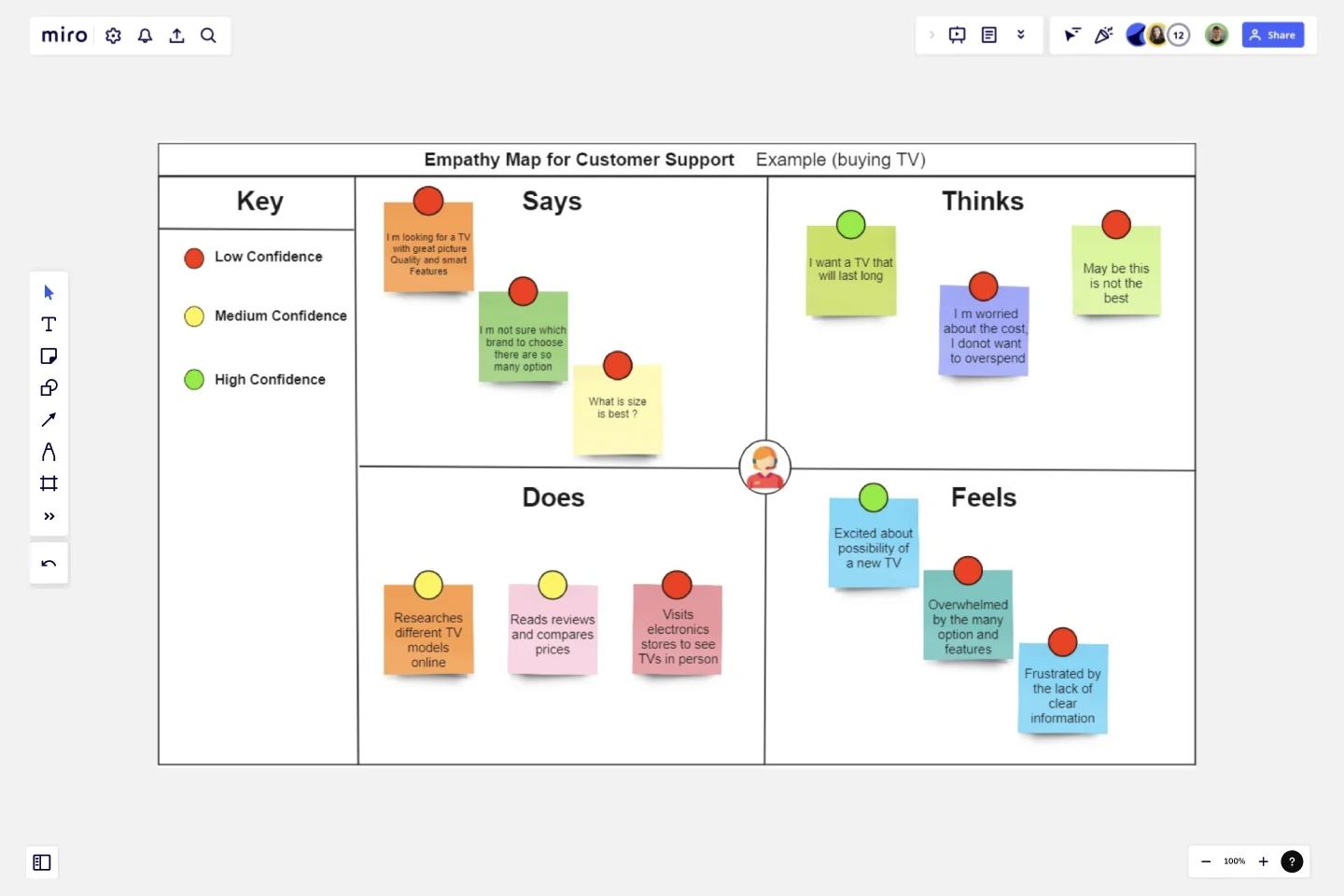Empathy Map for Customer Support
This empathy map helps you understand David's thoughts, feelings, and behaviors as he buys a TV.
You can use this information to design a better experience for him, such as:
- Providing clear and detailed product information
- Offering personalized recommendations based on his needs
- Ensuring a smooth and hassle-free purchasing process
By using this empathy map, you can create a more user-centered experience that addresses David's needs and concerns, and builds a strong relationship with him as a customer.
This template was created by Shafqat.
Get started with this template right now.
Status Report Template
Works best for:
Project Management, Documentation, Strategic Planning
A status report provides a snapshot of how something is going at a given time. You can provide a status report for a project, a team, or a situation, as long as it emphasizes and maps out a project’s chain of events. If you’re a project manager, you can use this report to keep historical records of project timelines. Ideally, any project stakeholder should be able to look at a status report and answer the question, “Where are we, and how did we get here?” Use this template as a starting point to summarize how something is progressing against a projected plan or outcome.
[Triple Diamond] Project Map
Works best for:
Roadmap, Mapping, Planning
The [Triple Diamond] Project Map template provides a comprehensive framework for managing project initiatives from inception to delivery. By guiding teams through the stages of discovery, definition, and delivery, this template ensures alignment with stakeholder expectations and project objectives. With a focus on user-centric design and iterative development, teams can deliver high-quality solutions that meet user needs and drive business value.
Wardley Mapping Canvas Template
Works best for:
Leadership, Strategic Planning, Mapping
A Wardley Map represents the landscape in which a business operates. It's made up of a value chain (the activities required to fulfill user needs) graphed against the evolution of individual activities over time. You place components with value on the y-axis and commodity on the x-axis. Use a Wardley Map to understand shared assumptions about your environment and discover what strategic options are available. Easily communicate your understanding of the landscape to your team, new hires, and stakeholders.
UML Sequence E-commerce Checkout Template
Works best for:
UML
The UML Sequence E-commerce Checkout Template in Miro is a versatile tool for visualizing and analyzing e-commerce checkout processes. It provides a step-by-step visual representation of system interactions, is highly customizable, supports real-time collaboration, and is suitable for various e-commerce platforms. It serves as an efficient documentation tool, fosters team collaboration, and contributes to a more streamlined checkout experience for customers.
Customer Touchpoint Map Template
Works best for:
Desk Research, Product Management, Mapping
To attract and keep loyal customers, you have to truly start to understand them—their pain point, wants, and needs. A customer touchpoint map helps you gain that understanding by visualizing the path your customers follow, from signing up for a service, to using your site, to buying your product. And because no two customers are exactly alike, a CJM lets you plot out multiple pathways through your product. Soon you’ll be able to anticipate those pathways and satisfy your customers at every step.
Detailed Empathy Map With Personas
Works best for:
Empathy Map
Understand your audience better with the Empathy Map Personas template. This tool helps you capture insights into your customers' needs, thoughts, feelings, and behaviors. By visualizing these personas, you can tailor your product development, marketing strategies, and customer interactions to better meet their needs and enhance user satisfaction. Ideal for teams focused on customer-centric solutions.
